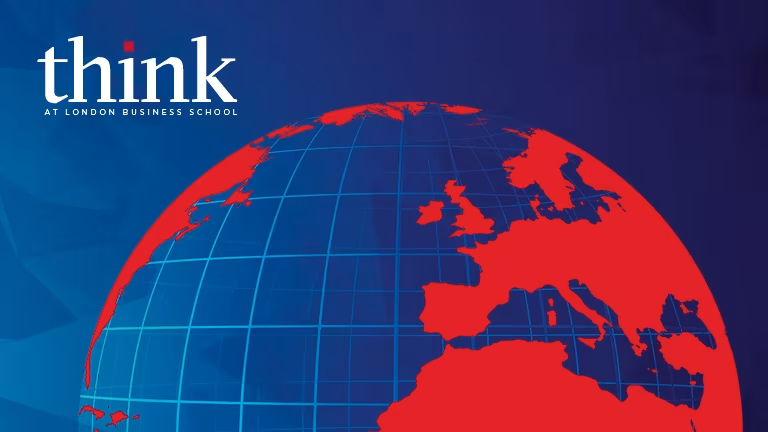
Discover fresh perspectives and research insights from LBS
Think at London Business School: fresh ideas and opinions from LBS faculty and other experts direct to your inbox
Sign upPlease enter a keyword and click the arrow to search the site
Or explore one of the areas below
Faculty share strategic, psychological and social insights

“A long habit of not thinking a thing wrong gives it a superficial appearance about being right,” wrote activist Thomas Paine (1737–1809). Bureaucracy and the traditional way things are done sap human potential. In what sort of organisations do people give their best? Where are they likely to stretch themselves, take personal risks and go the extra mile? The answer is start-ups: we need to infuse companies with an entrepreneurial spirit.
The real battle lines are no longer between companies. The war is between value-creating start-ups and large-scale bureaucratic regimes. Too many companies live in fear of being ‘Uberised’. They worry that their tradition-bound organisations are too slow to out-manoeuvre start-ups. Their anxiety is justified as the newcomers are typically the first to embrace new technologies and wow their customers.
To foster a spirit of ingenuity, leaders must commit to moving from incremental to bold, from bloated to lean and from coercive to free. Entrepreneurship and scale are no more incompatible than quality and efficiency or science and art. We haven’t been ambitious enough in trying to overcome those old trade-offs. It will take a radical overhaul of “management as usual” to reach a world where everyone acts like the owner, leaders are chosen by the led and everyone reports directly to the customer. It will take indignation to get there. Let’s get angry about it.
In 2010, the international airline KLM Royal Dutch Airlines surprised its customers with a new social media campaign. As passengers arrived at airports, flight attendants handed them a personalised gift – something they could enjoy or use on their trip. One passenger, travelling to Mexico to help build houses for the homeless, was given a thoughtful care package including bandages. Flight attendants browsed Twitter and Foursquare, looking for people who mentioned they were taking a KLM flight. The campaign, called Surprise, exceeded expectations by engaging with customers and bringing online conversations back into the real world. The experiment began with a simple question for KLM workers: “Are you into social media?” With a small team of volunteers and a budget of €10,000 (£8,532), the campaign was born.
The Surprise experiment is just one example of what happens when people are given the freedom to explore within the organisational frame. Many companies say they’re looking for agility, not top-down rule-following, but this requires thinking about people’s emotions differently. Fear, the traditional tool of management, won’t do the job.
How do you break the bars of what sociologist Max Weber coined the “Iron Cage” of bureaucracy? In KLM’s case, a team of volunteers self-selected into helping because they liked social media. Their ideas were valued, and they felt the work had purpose. To bend metal, leaders must find new ways for people to explore and learn. When individuals are offered opportunities to play with ideas and play to their strengths, their ‘seeking system’ is activated. This brain system urges them to explore their environment for information that will help them survive. Dopamine floods their systems and a sense of curiosity and interest take over. So try a different approach to change by asking, ‘Is anybody curious about this? Do you find this project exciting?’ And let people lead the charge.

Think at London Business School: fresh ideas and opinions from LBS faculty and other experts direct to your inbox
Sign up